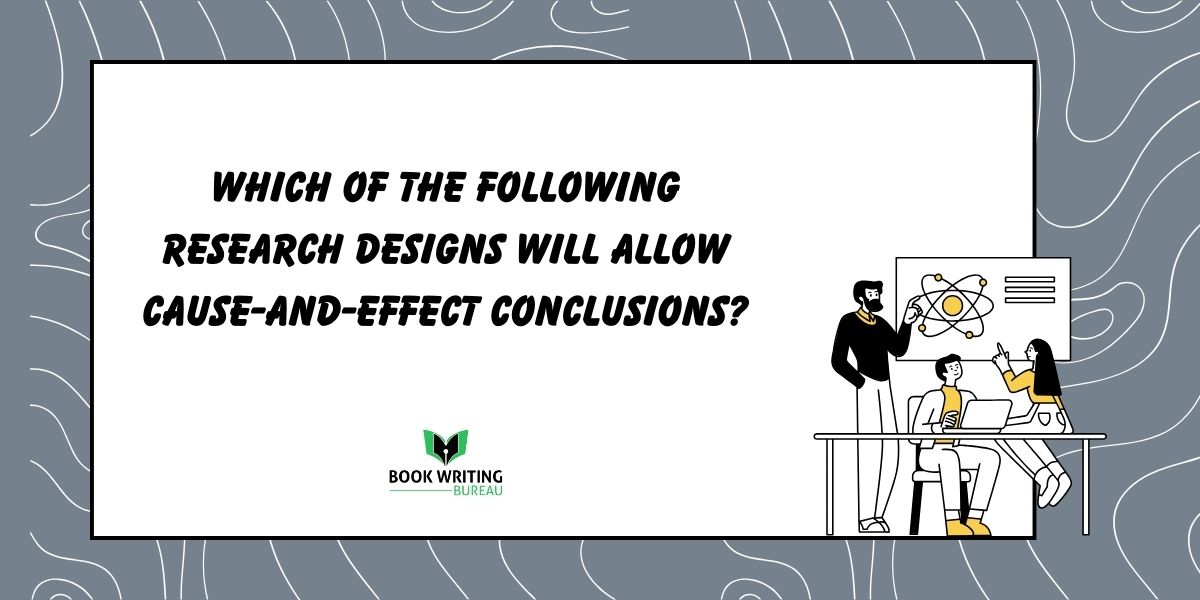
Research
This method can clearly show the connection between an independent variable end.
Here are some important parts of study methods to understand which of the following research designs will allow cause-and-effect conclusions. It will make things easier for you.
Randomized Controlled Trials (RCTs):
RCTs are thought to be the best way to find out what causes what in the study. People who take part in an RCT are randomly put into two groups. One group gets the treatment (the independent variable), and the other acts as a control.
Randomization helps eliminate factors that could affect the results, making it easier to link any effects seen to the treatment.
Manipulation of the Independent Variable:
Researchers can come to stronger conclusions about causes and effects when they can change the independent variable. For this, you have to understand which of the following research designs will allow cause-and-effect conclusions. Also, change or add a variable to see how it affects the dependent variable.
It’s more likely that a researcher will be able to prove a cause when they have control over the action or treatment.
1- Control Groups:
It is very important to have a control group to know how to separate the random variable’s effects. The only thing that should make the control group different from the treatment group is the independent variable. This helps rule out other possible reasons for any effects that have been seen.
2- Random Assignment:
Putting people into different groups at random helps ensure that differences between people are spread fairly across groups. The study’s internal validity is improved because external factors are less likely to have an effect.
3- Temporal Order:
For a cause-and-effect link to make sense, the cause must come before the result. To ensure a clear order of events, research plans should ensure that changing the independent variable comes before measuring the dependent variable.
4- Replication:
The results are more likely to apply to other situations when the same study is done more than once with different participants or in different places. The cause-and-effect link is more likely to be true when it is replicated.
5- Large Sample Sizes:
A larger sample size makes a study more statistically powerful, making it more likely to find real benefits. This is important to come to a good decision about cause and effect.
6- Consistency of Findings:
It’s easier to believe that one thing causes something else when the same results show up in different studies, by different experts like Indie Author, and using different methods. Authentic data helps you to understand which of the following research designs will allow cause-and-effect conclusions link make the judgment stronger.
Number of Styles: Choosing the Right Study Design
1. Experimental Design:
This is the best way to show a link between a cause and a result. Researchers change one variable (the independent variable) and examine how it affects another variable (the dependent variable) in an experimental method.
Researchers can be sure that any changes in the dependent variable were most likely caused by changing the independent variable by considering other possible factors and assigning tasks randomly.
2. Quasi-Experimental Design:
This type of design is like experimental design but doesn’t use random assignment. According to best book cover designers, A well-designed quasi-experiment can provide strong proof for cause-and-effect conclusions, even though it’s not as good at proving a causal connection because of possible confusing factors. This is especially true in real life, where things can’t be controlled.
3. Longitudinal Studies:
In longitudinal studies, data are gathered from the same people over time. Researchers can use this type of study design to find patterns and trends. If they can show that one variable changes before and after another variable changes, they can draw a cause-and-effect conclusion.
However, these types of study methods can’t always give clear-cut answers about which of the following research designs will allow cause-and-effect conclusions and what causes what. They all need careful management of possible influencing variables and outside factors that could change the observed connection.
Limitations of Research Designs
Researchers need to be aware of these limits to understand their data and improve their methods. Some common limitations highlighted by the best selling book writing services regarding research designs include:
1- External Validity:
One type of validity is external validity, which means that the study results can be applied to different places, people, and situations. There are times when research methods can’t be applied because of things like the study group’s unique qualities or the study setting’s uniqueness.
2- Internal Validity:
Internal validity looks at how accurate the study results are and how much the independent variable is to blame for changes seen in the dependent variable. Limitations can happen because of variables that make the results hard to understand, bad measuring tools, or insufficient control over unimportant factors.
3- Bias:
Any bias, like expert bias, answer bias, or selection bias, can make a study less reliable. You can consider researchers or best eBook writers for hire as they are aware of any biases that might be present in the study plan and work to reduce their effects as much as possible.
4- Sample Size:
Researchers may not be able to get big enough samples to draw useful results because they don’t have enough means or time. If the sample book size is small, the statistical power may be low, and predictions of impact sizes may not be as accurate.
5- Ethical limits:
Ethical concerns, like keeping the privacy and well-being of human subjects safe, can limit the types of study that can be done. Researchers have to follow a strict code of ethics, which may make it harder to study certain groups of people or change factors in certain ways.
6- Time Constraint:
If you don’t have enough time or money, you might have to use a plan to search for researchers and ghostwriters near me to fully answer the research questions. Because of time limitations, the study may not be as deep, wide, or rigorous.
7- Data Collection Methods:
Different ways of gathering data, like interviews, polls, and notes, can have problems with study design, like measurement mistakes, social choice bias, and how participants respond.
Conclusion:
It’s important to remember that which of the following research designs will allow cause-and-effect conclusions, no study strategy can rule out other possibilities. Researchers must carefully consider and deal with any uncertainties or limits in their studies that could make the results less reliable.



